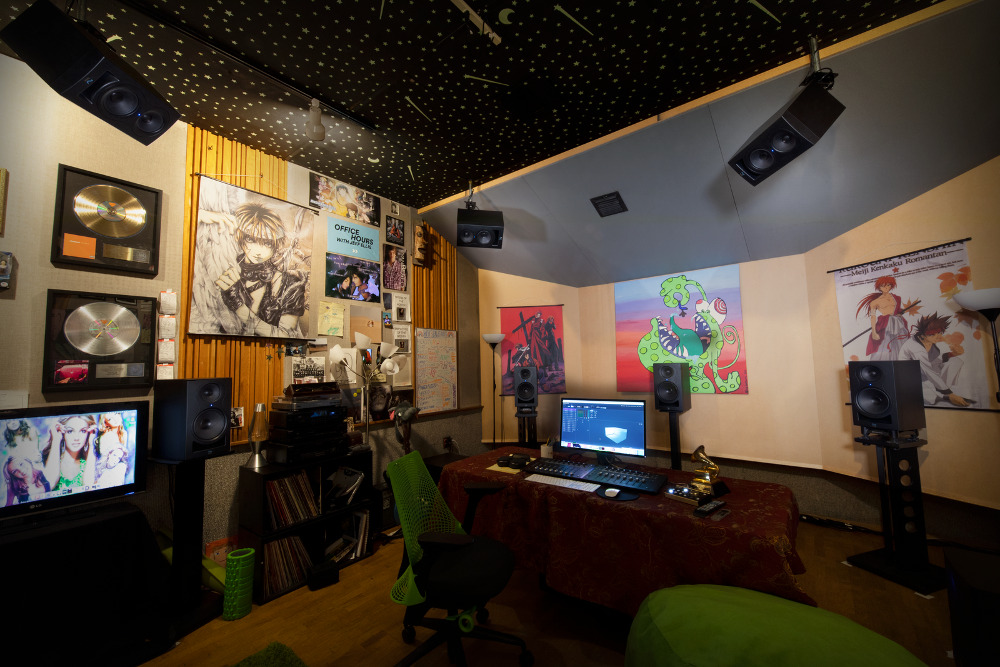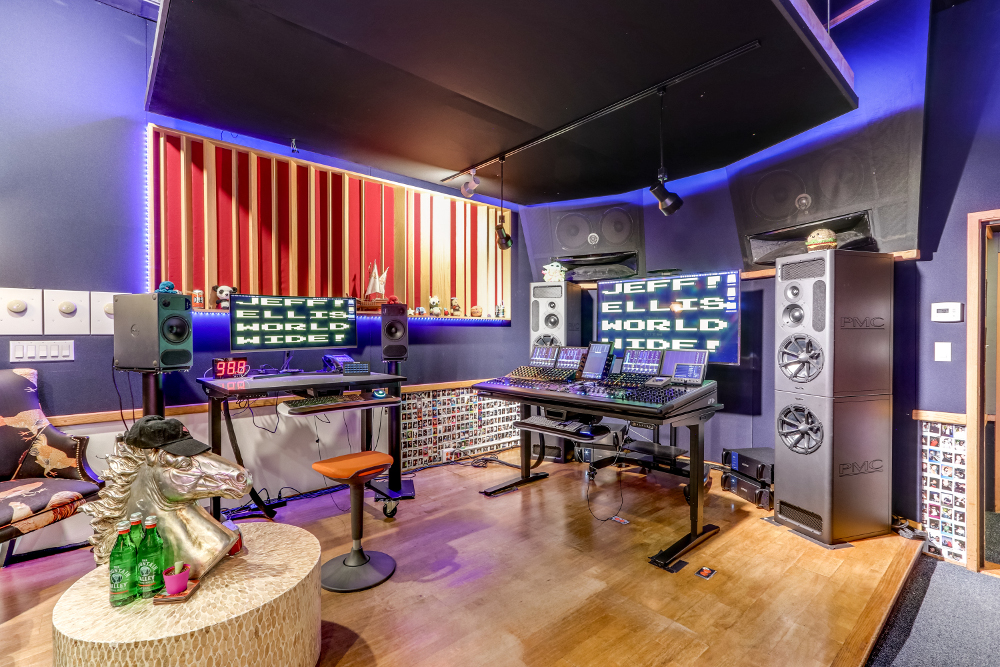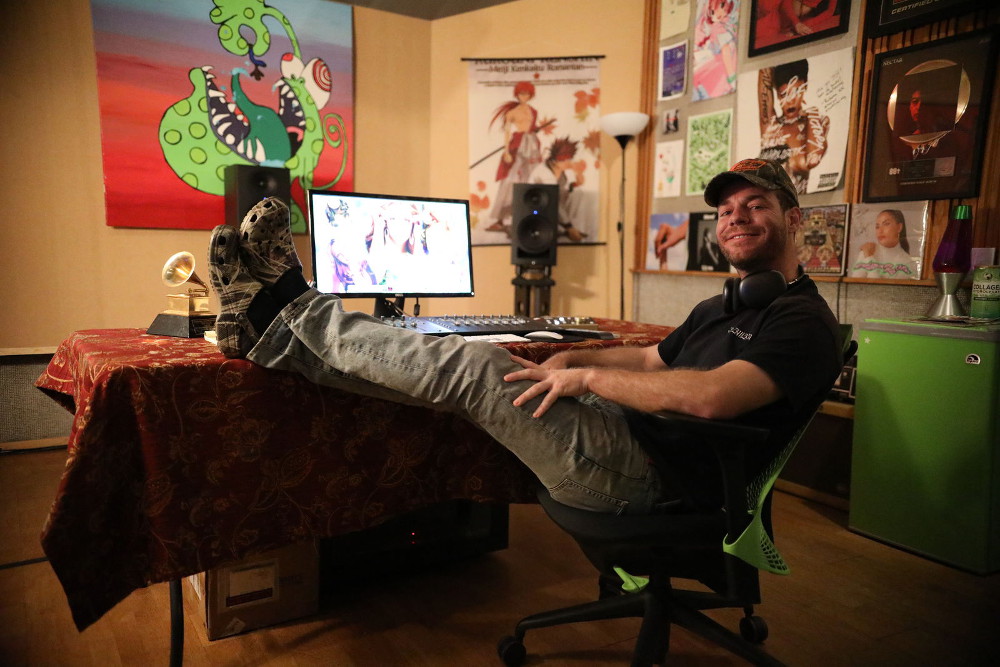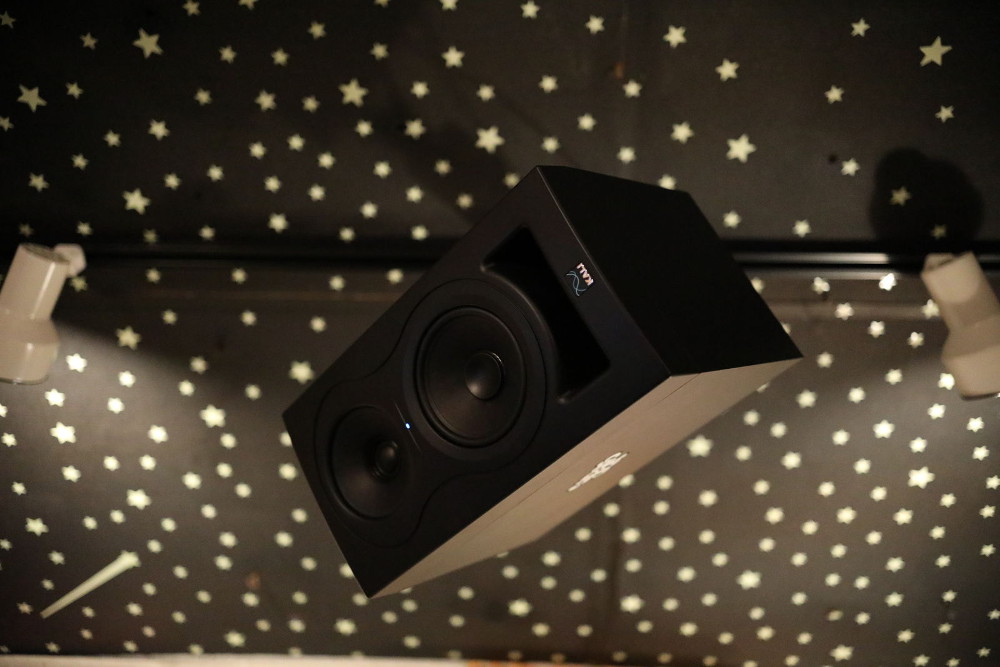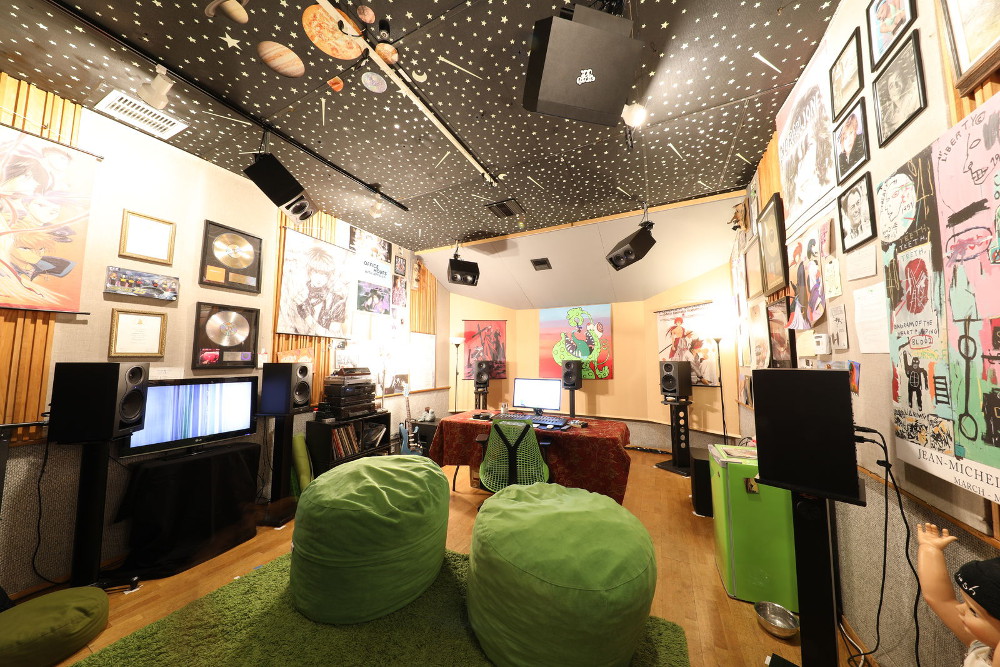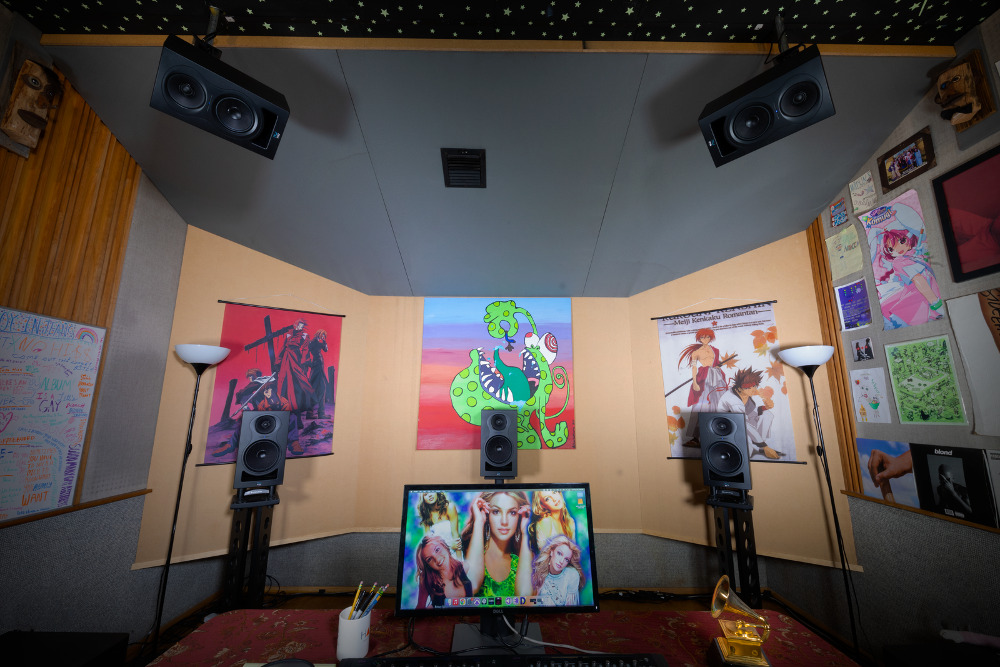How to Mix Dolby Atmos: Jeff Ellis Simplifies Spatial Audio
When Jeff Ellis mixes, the world hears it. And when he talks about Dolby Atmos mixing for spatial audio, studio pros need to listen.
Ellis’ impact spans his Grammy-winning work for Frank Ocean’s Channel Orange, Doja Cat’s Grammy-nominated 2021 album Planet Her, on to The Neighbourhood, Kali Uchis, Snoh Aalegra, Dominic Fike, 100 Gecs, Rico Nasty, and many more. Now he’s added a new dimension to his skillset, bringing the Atmos mix into the workflow.
He’s doing it in a new room at Los Angeles’ famed EastWest Studios. That Hollywood sound complex served as the recording home to Frank Sinatra, the Rolling Stones, the Beach Boys, and a ton of others. Rick Rubin loves recording there, while Nirvana, R.E.M., and Muse were mixed in Studio 5. The Bill Putnam-designed live rooms, rooted in the studio’s original guise United/Western Recorders, are practically hallowed ground.
And not to mention that Ellis launched his career at EastWest as an intern, and then a staff engineer. OK, EastWest isn’t famous for that — but Ellis’ return there just might move the needle, as he brings his own touch and attitude to immersive mixing.
Outfitting for Atmos
His new HQ: EastWest’s Studio 4. Its dual studios start with a Dolby Atmos mixing room, fully outfitted with Kali Audio monitors. The 7.1.4 spatial audio setup is made up of seven Kali IN-8’s on the listener plane (left, center, right, one side-surround pair, one rear-surround pair), four Kali IN-5-C’s overhead (left top front, right top front, left top rear, right top rear); and two Kali WS-12 subwoofers add oomph.
Notable solutions in the Atmos room include Avid Pro Tools | HD Native, an Avid Pro Tools MTRX Studio audio interface, Avid Artist Mix controller, JBL SDP-55 16-channel immersive surround sound AV preamp, Exponential Audio PhoenixVerb Surround, and Apple AirPods Max Bluetooth headphones.
“Given that most of the Atmos mixes have already been mixed by me in stereo, not too many plugins are used, generally just panners,” notes Ellis. “We will often use iZotope Ozone 9 Maximizer on the Atmos bed, to control dynamic range in Logic.”
The Atmos mix suite is a former live room. When Jeff’s in a two-channel mood, he ducks into the adjoining space, a stereo mix environment that used to serve as the control room for what is now the Atmos facility.
The main speakers in Ellis’ stereo room are PMC MB3 XBD’s. PMC twotwo.6’s are used frequently for detail work like effects and reverbs. The audio interface is an Avid MTRX HD. A second stereo mixing rig has PMC IB1’s for monitors and an Avid HD/IO. Both stereo mixing rigs have one Avid HDX card each, plus one UAD Satellite Thunderbolt OCTO Core.
“The main stereo mixing setup revolves around a fully loaded Avid S4 mixing console,” Ellis says. “This is an incredible tool that lets me do a lot of mixing not looking at a computer screen, which will change your life.
“The only analog gear I use are the echo chambers at EastWest Studios and a very magical EMT 140 Plate reverb they have here,” he continues. “And of course a control room made to sound acoustically amazing by EastWest Chief Engineer Lawrence Malchose. I try to simulate an analog workflow with the Avid S4, but otherwise we stay digital.
“My fav plugins are iZotope Neutron and Ozone. Baby Audio is incredible. Overall, I keep it pretty simple with the plugins: A huge percentage of the songs I mix come to me as DAW sessions from Ableton/Pro Tools and Logic, so I am often adjusting the artist/producers plugins more often than adding anything — a lot of plugin removing.”
Creating the Dream Job
Calling his Atmos room “a dream come true,” Ellis is awed at navigating full circle to EastWest. “The original idea was to have my own mixing room in a historic studio — now it’s happened,” he says. “There’s only one thing I could have ever done, and it’s this. My brain is wired perfectly for mixing music, and terribly for everything else. I can do one thing to black belt level.”
By being honest with himself about what he does well, and what he doesn’t, Ellis has been able to structure his career around his strengths. It’s a step that this plain-spoken mixer sees as essential for career longevity.
“A lot of people in audio just become a black hole of negativity,” he observes. “They start hating what was supposed to be their dream job. But they have to make changes and set boundaries and create the dream job, as opposed to expecting the dream job. (People say), ‘It’s music, it’ll be amazing!’ but it’s not that simple.
“I have to put a lot of work into making sure it will be fun. There were parts of my career when it didn’t feel like that. Even when everything’s working perfectly, it can slip into being a nightmare.”
What is Spatial Audio Mixing’s Mindset?
When Apple Music announced the launch of spatial audio with Dolby Atmos for June 2021, consumers were abuzz about the potential to experience 3D audio on their AirPods. Mixers everywhere were equally engaged, actively wondering whether they now needed to upgrade their mix rooms to Dolby Atmos specs.
The Apple Music spatial audio catalog arrived with thousands of tracks, including hip hop, country, Latin, pop and classical. As the interest in immersive continued to grow, Ellis decided that he should invest in his own Atmos mixing studio. The key was to make it for a manageable budget.
“This is not like any Atmos room ever – it’s set up to be achievable for almost anybody,” says Ellis. “Most of the Atmos studio beauty shots you see on Instagram are rooms that – if you scrape away every extra – still cost $60,000 in monitors to equip. A lot of them cost 150 grand or more. That is not practical for normal engineers or mixers who are early in their career.”
Ellis set out to find monitoring solutions that wouldn’t flatten his business’ profitability. “Kali has designed these speakers to sound incredible,” he says. “I set my goals on a Dolby Atmos monitor system that would cost me around $10,000. I said, ‘What’s a system I can get for that price? What does that look like? Let’s not spend a ton of money, and if Atmos turns out not to be a thing I didn’t get $150,000 of additional debt.’
“I can do a fantastic mix in this room. The Kali speakers sound epic. My very first Dolby Atmos mix sounded great, in the room and on headphones. That’s important because you don’t want to have to think about your system. You want to sit down, do the mix, and you’re good to go.”
Finding the Effortless Workflow
So far, Ellis is confident he’ll get his ROI and then some on the Dolby Atmos setup. His typical job flow lately is to get hired by a label to do a stereo mix. Following that approval, he gets a Dolby Atmos mix request a full 80% of the time.
The only thing that’s maxed is the vibe in Studio 4. Everywhere else, Ellis focused on finding new ways to simplify how to mix in Dolby Atmos.
“Everything people tell me is wrong for Atmos, that you can’t do, I do,” states Ellis. “I’m doing it all on an M1 Mac Mini with Logic, with no external renderer. Logic has integrated Atmos in such a way that it’s seamless, effortless and so much fun to mix spatial audio.
“You can literally pick up your Apple AirPods or Apple Air Max headphones and Logic will automatically sense that, and switch the playback engine going from Logic into your Apple listening device. They’ve integrated the render into Logic. As a result, the Atmos mix you get is how it will sound on people’s Apple headphones. The monitor setup helps me to further hone my mix – it’s also important because I believe more people will be driving cars with Atmos built in.”
Surround AND Stereo
Even as Ellis’ spatial audio catalog grows, he sees the format as a double-edge sword.
“Atmos can be fantastic or terrible, depending on how you use it,” he notes. “It’s important that people remember what makes music feel great. If you start using it as a way to flex technology, it’s not going to be right.
“The same rules that apply in stereo mixing apply when mixing in Dolby Atmos. Is what we’re doing honoring the song? Connecting emotionally? If you just start swirling stuff around in people’s head what is the artful impact? Maybe it’s just a bad decision.
“Listeners are not thinking about the technology. Just because you can pan in a 3D way, doesn’t mean you have to. You can do an Atmos mix that’s mainly a stereo mix, and there’s nothing wrong with that. Certain arrangements of songs don’t lend themselves to being heard in non-traditional ways, and certain ones do.”
One of the joys of Jeff Ellis’ job is a varied diet, mixing in stereo and Dolby Atmos. “It’s fun to do both,” he says. “At first I was a huge hater of spatial audio, but then I started getting used to it, learning what works and what doesn’t. Now my Atmos mixes are more enjoyable, and it’s only going to get better.”
— David Weiss is an Editor for SonicScoop.com, and has been covering pro audio developments for over 20 years. He is also the co-author of the music industry’s leading textbook on synch licensing, “Music Supervision, 2nd Edition: The Complete Guide to Selecting Music for Movies, TV, Games & New Media.” Email: david@sonicscoop.com
Please note: When you buy products through links on this page, we may earn an affiliate commission.







